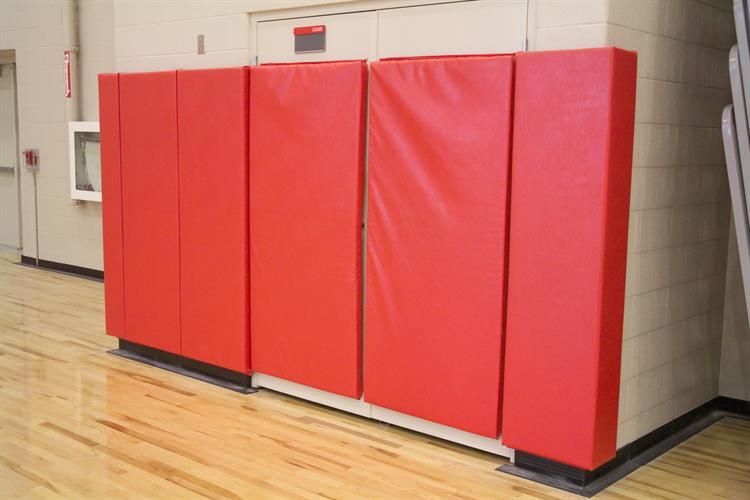
With so many options and a variety of suppliers on the market today, we have compiled the following points of consideration for your next purchase.
Foam
Obviously a vital part to your wall padding, foam comes in a variety of options, most of which are pretty good. What you will want to make sure of is the ability of the padding to absorb shock from an impact. There are two units of measurement to help you identify this, foam density and indentation force deflection (IFD) (or indentation load deflection). Foam density is more of an indicator of the durability of the foam and has little bearing on the ability of the padding to absorb shock. While ILD is a measure of force required to compress a 4” thick piece of foam to a pre-determined percentage of its original thickness. Higher ILD rating is equal to more shock absorption.
Manufacturer
Although this might seem as a mindless plug from a padding manufacturer, we do not recommend athletic padding manufactured by upholsterers, canvas manufacturers or any other manufacturers who do not regularly design and manufacture padding. With athletic padding in particular, it is very important to have a manufacturer you trust and that has sufficient experience making the type of padding specific to your athletic facility.
ASTM Standards
If the manufacturer in question’s padding does not meet current ASTM specifications, you should be very skeptical. Ensure your padding is ASTM F2240-11, which includes the minimum acceptable measures for shock absorption. Phthalates should also be of great concern as well as double checking that your pads are fire retardant. Looking for ASTM E-84 rated padding will ensure your facility has the proper fire rating, while ASTM D3421-75 phthalate testing will guarantee you have a phthalate content of less than 0.01%.
There are obviously many other factors to think about with regards to your next purchase of protective wall padding, like size, shape and placement. But starting with the above brief guidelines will ensure your buyer’s journey begins on the right path.
.png)

